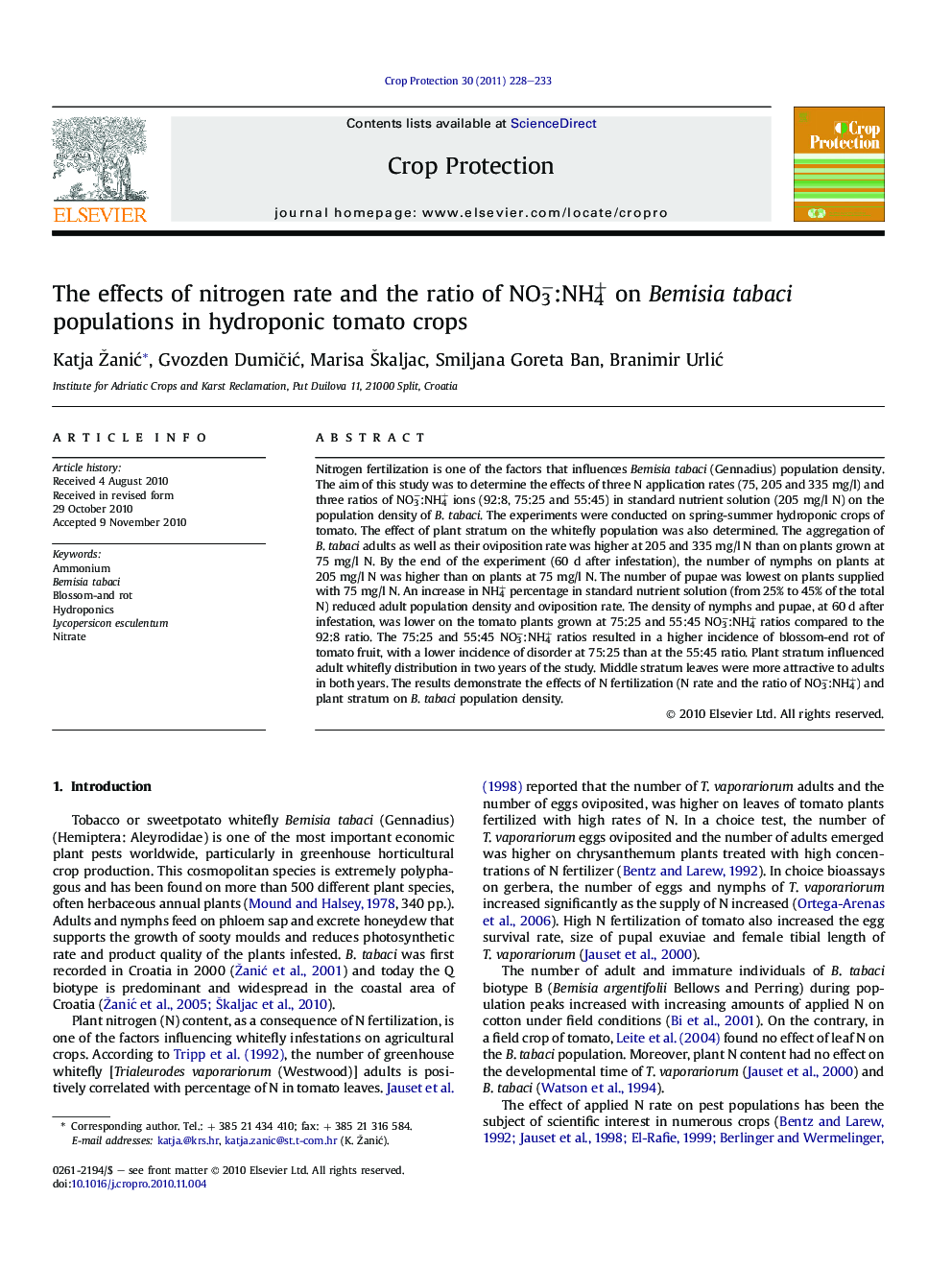| کد مقاله | کد نشریه | سال انتشار | مقاله انگلیسی | نسخه تمام متن |
|---|---|---|---|---|
| 4506661 | 1321323 | 2011 | 6 صفحه PDF | دانلود رایگان |

Nitrogen fertilization is one of the factors that influences Bemisia tabaci (Gennadius) population density. The aim of this study was to determine the effects of three N application rates (75, 205 and 335 mg/l) and three ratios of NO3−:NH4+ ions (92:8, 75:25 and 55:45) in standard nutrient solution (205 mg/l N) on the population density of B. tabaci. The experiments were conducted on spring-summer hydroponic crops of tomato. The effect of plant stratum on the whitefly population was also determined. The aggregation of B. tabaci adults as well as their oviposition rate was higher at 205 and 335 mg/l N than on plants grown at 75 mg/l N. By the end of the experiment (60 d after infestation), the number of nymphs on plants at 205 mg/l N was higher than on plants at 75 mg/l N. The number of pupae was lowest on plants supplied with 75 mg/l N. An increase in NH4+ percentage in standard nutrient solution (from 25% to 45% of the total N) reduced adult population density and oviposition rate. The density of nymphs and pupae, at 60 d after infestation, was lower on the tomato plants grown at 75:25 and 55:45 NO3−:NH4+ ratios compared to the 92:8 ratio. The 75:25 and 55:45 NO3−:NH4+ ratios resulted in a higher incidence of blossom-end rot of tomato fruit, with a lower incidence of disorder at 75:25 than at the 55:45 ratio. Plant stratum influenced adult whitefly distribution in two years of the study. Middle stratum leaves were more attractive to adults in both years. The results demonstrate the effects of N fertilization (N rate and the ratio of NO3−:NH4+) and plant stratum on B. tabaci population density.
Research highlights
► Bemisia tabaci shows different affinities for N treatments (N rate and the ratio of NO3−:NH4+) on tomato.
► Pest population density is higher at 205 and 335 mg/l N than on 75 mg/l N.
► An increase in NH4+ percentage (25% and 45% of the total N) has a negative influence on B. tabaci.
► The percentage of 25% NH4+ of the total N causes less blossom-and rot (BER) incidence than 45% NH4+.
► Plant stratum influences B. tabaci distribution.
Journal: Crop Protection - Volume 30, Issue 2, February 2011, Pages 228–233